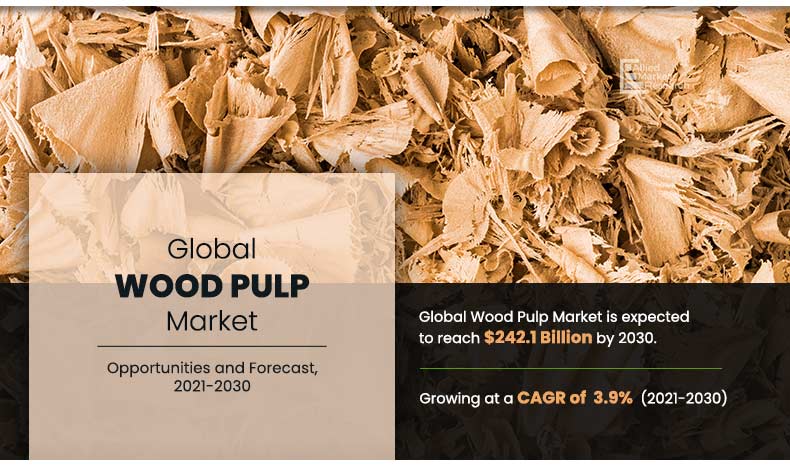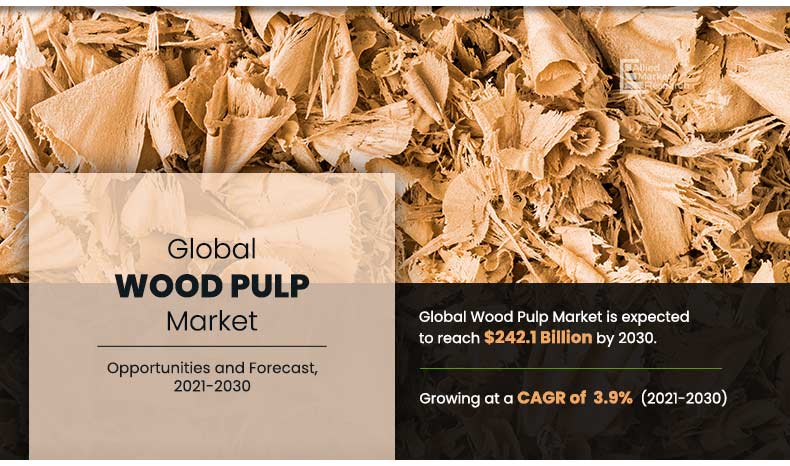What Drives Growth in Global Pulp Market?

Exploring the Global Pulp Market Landscape
Understanding the Current Dynamics of the Global Pulp Market
The global pulp market is experiencing significant shifts in recent times.
Latest Market Trends in the Global Pulp Industry
- Sustainable sourcing practices gaining traction.
- Increasing demand for packaging materials.
- Technological advancements impacting production efficiency.
These trends indicate a growing emphasis on sustainability and innovation within the global pulp market.
Key Players Driving Growth in the Global Pulp Market
- International Paper Company
- Stora Enso
- UPM-Kymmene Corporation
These key players have been instrumental in driving growth and innovation in the global pulp market.
The global pulp market is highly dynamic, with environmental concerns and technological advancements playing a crucial role in shaping its landscape. Sustainable practices and innovative solutions are becoming increasingly important in meeting the evolving needs of the industry.
International Paper Company, a major player in the pulp industry, has been at the forefront of sustainable sourcing practices, aligning with the growing demand for environmentally friendly products. This strategic approach not only benefits the company but also contributes to the overall sustainability goals of the industry.
Stora Enso, another key player in the global pulp market, has been focusing on research and development to enhance the efficiency of its production processes. By investing in technology, Stora Enso aims to improve the quality of its pulp products while reducing environmental impact.
UPM-Kymmene Corporation stands out for its commitment to innovation and sustainability.
Market Analysis and Forecast for the Global Pulp Industry
Market analysis reports indicate a stable condition in the global pulp market.
Experts predict growth in the global pulp industry in the coming years.
The current state of the global pulp market shows consistent demand and supply.
Forecasts suggest an upward trend in the global pulp industry due to increasing consumption.
Market analysis reports emphasize the importance of sustainability practices in the pulp sector.
Forecasts anticipate a rise in market size for the global pulp industry driven by various factors.
Global pulp market trends reflect a focus on eco-friendly production methods for sustainable growth.
Future forecasts for the global pulp industry point towards a positive trajectory.
Dominant players in the global pulp market continue to invest in innovative technologies.
Market analysis reports highlight the importance of strategic partnerships for market expansion.
Forecasts project a promising outlook for the global pulp industry with technological advancements.
Industry experts anticipate steady growth in market size for the global pulp industry.
The global pulp market is expected to witness significant growth based on current trends.
Forecasts for the global pulp industry align with the increasing demand for paper products globally.
Market analysis reports shed light on the potential challenges facing the global pulp market and offer solutions for sustainable growth.
Sustainable Practices and Technological Advancements in Pulp Production
Sustainability efforts prioritize eco-friendly practices in the global pulp industry. Manufacturers aim to reduce environmental impact.
Implementing renewable energy sources reduces carbon footprint and enhances sustainability measures. Efficient water management is crucial for sustainable pulp production practices.
Investing in research and development leads to innovative technologies in pulp production. Automation streamlines processes and minimizes resource waste effectively.
Digitalization enhances monitoring systems, optimizing production efficiency and reducing energy consumption. Advanced recycling methods help decrease waste products and environmental pollution.
Biodegradable alternatives are emerging in response to sustainability demands and consumer preferences. These alternatives aim to reduce reliance on traditional pulp sources.
Technological advancements like closed-loop systems promote resource conservation and waste reduction. These systems aim to create a more sustainable and efficient pulp production cycle.
Incorporating artificial intelligence and machine learning improves predictive maintenance and operational performance. These technologies increase productivity while reducing operational costs.
Continuous improvements in pulp production technologies aim to achieve a balance between environmental conservation and economic viability. Sustainable practices and technological advancements go hand in hand to shape the future of the global pulp industry.
Pricing Dynamics and Supply Chain Insights in the Global Pulp Market
The pricing dynamics of the global pulp market are crucial factors that directly influence supply and demand. Changes in pricing can impact the profitability of pulp producers, influencing production levels and market competitiveness. For instance, when pulp prices increase, manufacturers may seek alternative materials, affecting the demand for pulp. Conversely, lower prices may lead to higher demand but could reduce profit margins for producers.
Analyzing the supply chain of the pulp industry provides valuable insights into the production, distribution, and consumption of pulp products. By studying the supply chain, we can identify inefficiencies, optimize processes, and enhance sustainability practices. Understanding the flow of raw materials, manufacturing processes, transportation logistics, and end-user consumption patterns allows for better decision-making and strategic planning within the industry.
Pricing dynamics are influenced by a variety of factors, including global economic conditions, supply and demand dynamics, currency exchange rates, and environmental regulations. Market trends, such as shifts towards sustainable practices and increasing digitalization, also play a significant role in shaping pricing dynamics in the pulp industry. By monitoring these factors, stakeholders can better anticipate market fluctuations and adjust their strategies accordingly.
Analyzing the supply chain of the pulp industry reveals key information about the sourcing of raw materials, production efficiency, transportation costs, and market distribution channels. By mapping out the entire supply chain, companies can identify opportunities for cost savings, reduce waste, improve product quality, and enhance overall efficiency. This comprehensive view of the supply
Section 5: Regulatory Updates and Future Growth Opportunities in the Global Pulp Market
Regulatory Updates
The global pulp market recently saw new regulations imposed on sustainable sourcing practices. Regulations aim to promote environmentally friendly production methods. These updates require pulp manufacturers to adhere to strict guidelines for sourcing raw materials. The emphasis is on sustainability and conservation efforts in the production process. Compliance with these regulations is crucial for the long-term viability of the pulp industry.
One recent regulatory update is the implementation of stricter guidelines for forest management. This update focuses on ensuring that pulpwood is sourced from responsibly managed forests. It aims to prevent deforestation and promote biodiversity conservation. The regulation also aims to reduce the environmental impact of pulp production.
Another significant regulatory change is the increase in tariffs on imported pulp products. This change affects global trade dynamics within the pulp industry. Higher tariffs influence pricing strategies and market competition. Manufacturers must adapt to these changes to remain competitive in the global market.
Future Growth Opportunities
Looking ahead, the pulp industry is poised for growth in several key areas. One major opportunity lies in the demand for sustainable pulp products. Consumers are increasingly prioritizing environmentally friendly products, creating a market for sustainable pulp alternatives. Manufacturers that invest in sustainable practices can capitalize on this growing demand.
Technological advancements also present growth opportunities in the pulp market. Innovations in pulp production processes, such as the development of alternative raw materials, can enhance efficiency and sustainability. Companies that embrace technological innovations stand to gain a competitive edge in the industry.
FAQs about global pulp market
Is the demand for global pulp expected to increase in the upcoming years?
The global pulp market is projected to witness a rise in demand in the coming years due to the growing packaging industry, particularly with the surge in e-commerce activities worldwide. Additionally, the increasing awareness about sustainable practices is steering the market towards eco-friendly packaging solutions, further boosting the demand for pulp products.
What factors drive the pricing fluctuations in the global pulp market?
Several factors influence the price volatility in the global pulp market, including supply and demand dynamics, production costs, currency fluctuations, trade policies, and environmental regulations. Changes in these variables can lead to substantial price fluctuations in the pulp market, impacting both producers and consumers within the industry.
How do regulations and sustainability initiatives impact the global pulp market?
Regulations and sustainability initiatives significantly influence the global pulp market, with an increasing focus on sustainable sourcing practices, deforestation regulations, and carbon footprint reduction. Companies are increasingly adopting eco-friendly pulp production methods to adhere to stringent environmental norms, meet consumer preferences for sustainable products, and ensure long-term viability in the market.
What role does technological innovation play in the global pulp market?
Technological advancements have revolutionized the global pulp market by optimizing production processes, enhancing efficiency, and reducing environmental impact. Innovations such as biorefineries, digitalization, and advanced recycling technologies are reshaping the pulp industry, driving sustainability, cost-effectiveness, and product diversification to meet the evolving demands of consumers and regulatory requirements.
How are global trade dynamics impacting the pulp market worldwide?
Global trade dynamics have a profound impact on the global pulp market, influencing supply chains, pricing strategies, and market trends. Trade agreements, tariffs, geopolitical tensions, and shifts in consumer preferences across different regions can significantly alter the dynamics of the pulp market, shaping the competitive landscape and strategic decisions of key players in the industry.
In conclusion, we’ve explored the dynamic global pulp market landscape and its key players. Market analysis reports offer insights and forecasts for the industry’s growth. Sustainability efforts and technological advancements are reshaping pulp production. Pricing dynamics and supply chain transparency impact the market significantly. Staying updated on regulatory changes and growth opportunities is vital for industry success.






